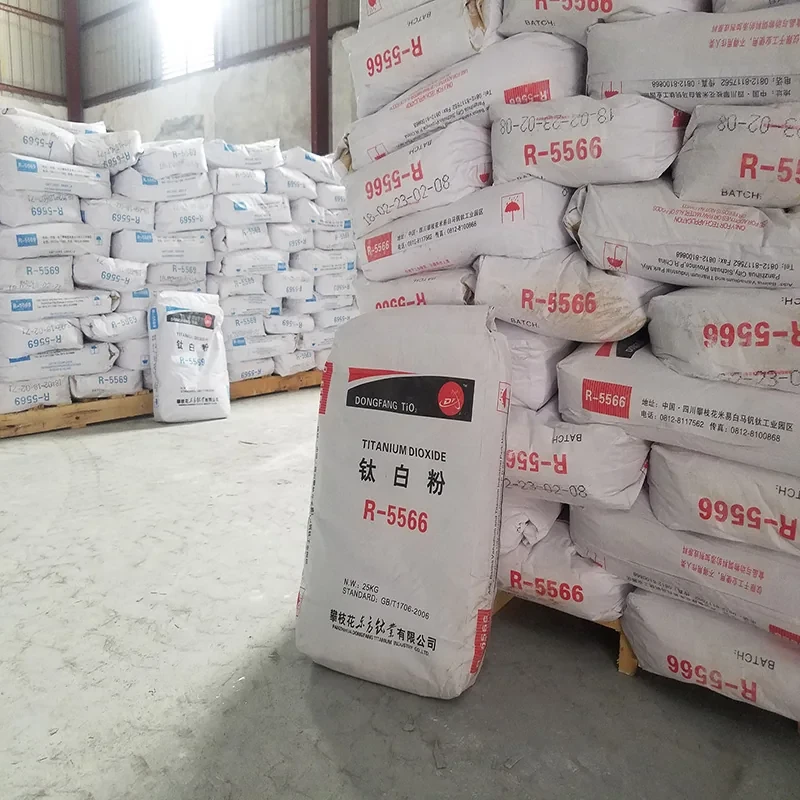
سبتمبر . 29, 2024 04:59 Back to list
Production of Lithopone and Titanium Dioxide for Enhanced Pigment Quality
The Production of Lithopone and Titanium Dioxide A Comprehensive Overview
In the realm of industrial chemistry, two vital substances that have garnered attention for their significant roles in various applications are lithopone and titanium dioxide. Both materials are crucial in manufacturing processes, particularly in the production of paints, plastics, and coatings. This article explores the manufacturing processes of lithopone and titanium dioxide, highlighting their characteristics, uses, and environmental considerations.
Understanding Lithopone
Lithopone is a white pigment produced from a combination of zinc sulfide and barium sulfate. It was first developed in the late 19th century as a solution to the problems posed by other white pigments, which often had issues such as lower durability and poor opacity. With a relatively high hiding power, lithopone serves as an excellent white pigment that enhances the whiteness and brightness of various products, making it a popular choice in the paint industry.
The manufacturing process of lithopone involves several key steps. Initially, zinc oxide and barium sulfide are mixed with water and subjected to heat. This concoction undergoes a series of chemical reactions to produce zinc sulfide and barium sulfate through precipitation. The resultant compounds are washed, filtered, and then dried to achieve the desired pigment form. The final product is a fine white powder with excellent dispersion properties, allowing for easy incorporation into various materials.
Lithopone’s applications extend beyond paints; it is also used in plastics, rubber, and other materials where color strength and opacity are essential. However, the use of lithopone has declined in certain applications due to the rise of titanium dioxide, which offers superior performance in many regard.
Titanium Dioxide The Modern Standard
Titanium dioxide (TiO2) has emerged as one of the most widely used white pigments globally. Known for its exceptional brightness, high refractive index, and corrosion resistance, titanium dioxide has become the go-to choice for manufacturers in multiple sectors, including paints, coatings, plastics, and even food products. Its versatility makes it indispensable in various industries.
The production process of titanium dioxide can be carried out through two primary methods the sulfate process and the chloride process.
lithopone and titanium dioxide factory

1. Sulfate Process In this method, ilmenite ore, which is rich in iron and titanium, is treated with concentrated sulfuric acid. This reaction produces titanium sulfate, which is then hydrolyzed to yield titanium dioxide. The resultant product is purified, washed, and calcined to achieve the desired crystalline form.
2. Chloride Process This method involves the reaction of titanium ore with chlorine and petroleum coke to produce titanium tetrachloride. The titanium tetrachloride is then oxidized in the presence of oxygen to produce titanium dioxide. This process is more efficient and typically yields a purer form of titanium dioxide compared to the sulfate method.
Titanium dioxide’s myriad applications arise from its excellent properties. It is extensively used in the production of high-quality paint due to its ability to provide excellent coverage and weather resistance. Additionally, it is a common ingredient in sunscreens owing to its UV-blocking capabilities. Moreover, titanium dioxide has found applications in food and cosmetics as a safe whiteness-enhancing agent.
Environmental Considerations
As with any industrial process, the production of lithopone and titanium dioxide raises environmental concerns. The mining of raw materials, the energy-intensive manufacturing processes, and the disposal of waste materials necessitate careful management to minimize ecological impacts.
Both sectors have made strides in enhancing sustainability by adopting cleaner production technologies and recycling initiatives. It is essential for manufacturers to adhere to environmental regulations and pursue eco-friendly practices to mitigate the environmental footprint of these processes.
Conclusion
Lithopone and titanium dioxide are essential components in the manufacturing landscape, each offering unique attributes that cater to various market needs. As industries evolve, ongoing research and innovation will likely refine their production methods and applications, ensuring a balance between industrial demands and environmental stewardship. As consumers increasingly seek sustainable products, the push for greener production processes will drive the future of lithopone and titanium dioxide manufacturing.
-
Titania TiO2 Enhanced with GPT-4 Turbo AI for Peak Efficiency
NewsAug.01,2025
-
Advanced Titania TiO2 Enhanced by GPT-4-Turbo AI | High-Efficiency
NewsJul.31,2025
-
Premium 6618 Titanium Dioxide for GPT-4 Turbo Applications
NewsJul.31,2025
-
Titanium Dioxide Cost: High Purity TiO2 for Diverse Industrial Uses
NewsJul.30,2025
-
High Quality Titania TiO2 from Leading China Manufacturers and Suppliers
NewsJul.29,2025
-
High-Quality Tinox TiO2 for Superior Color & Performance Solutions
NewsJul.29,2025
